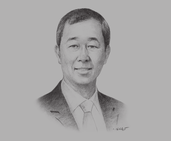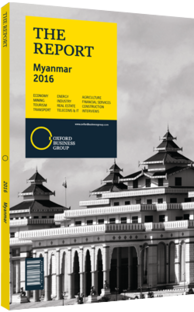U Htun Myint Naing, Chairman, Asia World: Interview

Interview: U Htun Myint Naing
Where should investment be prioritised in order to bolster the capacity of the country’s ports?
U HTUN MYINT NAING: Myanmar’s transport infrastructure has been stretched by economic development. The recent election will also boost the economy and demand for better transport infrastructure. Ports have been one of the main arteries for goods imports and exports, and will likely remain so in light of the deficiencies in road and rail transport.
Port of Yangon has sufficient capacity to handle the expected increase in cargo. Stakeholders such as the Myanmar Port Authority, Customs and service operators need to work together closely to maximise the benefits of port use. The immediate priority should be to focus on technology advancement, both software and hardware, with trained manpower. Both the authorities and service operators need to adopt the use of new technology. Where possible, document processing should be cleared online, be it Customs, immigration or service operators, via the use of the updated terminal operation system and the electronic data interchange (EDI) system. New hardware technology investments, expertly handled by trained manpower, will also improve efficiency.
What types of cargo do you expect to dominate shipping activity over the next few years?
HTUN MYINT NAING: We are likely to see more imports than exports. Construction materials, factory equipment, processed food, fertiliser, medical supplies and consumer goods will see the greatest growth in imports. These are essential for the development of infrastructure and the new era of manufacturing in the early stage of Myanmar’s economic growth. The growth of the economy will also bring a rise in demand for consumer products.
Exports will likely be dominated by agricultural produce, so long as it meets international standards. In time they will be supplemented by labour-intensive goods such as garments and processed wood products. We view the imbalance in import and export as a gestation period for Myanmar in developing its infrastructure, technology, policies and capabilities.
What is your assessment of the adoption of technology within the logistics sector?
HTUN MYINT NAING: It is a must, but we should not forget that humans control the full utilisation of the benefits of technology. Prioritising education, training and certification is the way any industry is able to develop further with technology. It is pointless to invest in the best technology without the pool of people capable of using it and maximising the benefits. Well trained and experienced people will drive the use of technology in improving quality and efficiency.
What improvements are needed to ease the movement of cargo over land?
HTUN MYINT NAING: Movement of cargo is initiated mainly from Yangon as the entry point to other parts of Myanmar via roads, rail or river. Constant upgrading, including the building of flyovers on Yangon’s main roads to ease traffic, has improved cargo movement but it is not a long-term solution.
A comprehensive road transportation review is needed. Be it road expansion, building of new roads or alternative ring roads to ease congestion in and out of Yangon, a long-term view must be taken in tandem with Myanmar’s development. This also applies to rail transport. Other stakeholders, such as logistics and transportation companies, will need to increase their capabilities. Mergers, pooling of resources or government initiatives may encourage the growth of larger logistics and transportation firms. Economies of scale are required to invest in a more efficient logistics management system, new and more environmentally friendly heavy vehicles, training, and the EDI system to ensure the smooth movement of cargo.
You have reached the limit of premium articles you can view for free.
Choose from the options below to purchase print or digital editions of our Reports. You can also purchase a website subscription giving you unlimited access to all of our Reports online for 12 months.
If you have already purchased this Report or have a website subscription, please login to continue.

